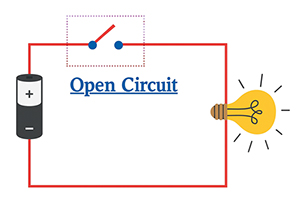Choosing the Right Step Down Transformer: Everything You Should Know
Author:admin Date: 2025-06-30 06:46 Views:314
Transformers play a crucial role in the electricity supply and various devices. Without them, you might not have the right level of voltage to operate a device. That is why you use a step-up and step-down transformer to maintain the voltage at the correct level, depending on your specific needs. We will examine a step-down transformer in detail to understand its operation, types, applications, and other key aspects.
- What is a Step Down Transformer ?
- Key Electrical Features of a Step-down Transformer
- How Does a Step Down Transformer Work?
- Types of Step Down Transformers
- Applications of a Step-Down Transformer
- Pros and Cons of Step Down Transformers
- How to Choose the Best Step-Down Transformers
- Maintenance Tips for Step Down Transformers
- Difference Between Step Up And Step Down Transformers
- 結論
What is a Step Down Transformer ?

This is a type of device used for reducing the voltage of alternating current (AC) electrical supply. To make this possible, the transformer has more windings in the primary coil compared to the secondary coil; thus you end up with a lower voltage output.
Key Electrical Features of a Step-down Transformer
Step-down transformers will have many features that make them suitable for several applications. Such electrical features include:
Voltage Transformation
The primary voltage is the higher input voltage from the power source. We then have the secondary voltage, which is the reduced output voltage that reaches the load.
To achieve the voltage reduction, you need to adjust the number of turns in the primary winding. They have to be greater than those in the secondary winding.
Current Transformation
The primary current is expected to be lower because of the higher voltage level. As for the secondary current, it will be higher than the primary because of the voltage reduction. The power in both cases remains relatively the same.
Turns Ratio
This is the ratio between the primary to secondary turns to help determine the amount of voltage reduction. Having a higher turns ratio indicates that it is a step-down transformer.
Efficiency
The overall efficiency of the step-down transformers refers to how effectively the transformer can convert power from the input to the output. The design should consider how it is possible to minimize energy losses during voltage conversion.
Both step up and step down transformers should deliver the best efficiency to make them reliable for an operation. Factors such as copper and core losses often impact their efficiency.
How Does a Step Down Transformer Work?
The step down transformer has the primary coil, secondary coil, and a ferromagnetic core.
The primary coil has a higher number of turns than the secondary coil. As for the ferromagnetic core, it provides a path for the magnetic flux, which enhances coupling between the two coils.
When the input voltage is applied to the primary coil, a magnetic field is generated in the primary coil. This changing magnetic field in the primary coil then induces a voltage in the secondary coil.
Since the secondary coil comes with fewer turns compared to the primary, the induced voltage in the secondary coil is lower. That is where the name “step down” comes in.
Types of Step Down Transformers
Since you already know what is a step down transformer, we are now going to look at the various types available. Here is what to expect.
Single-phase step-down transformers
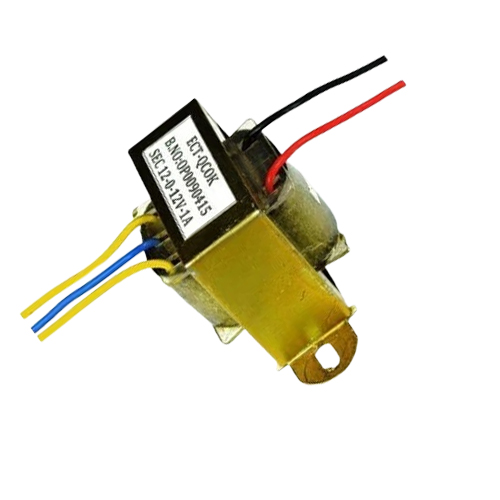
These are designed to step down the voltage in a single-phase AC input to another lower single-phase AC output. You should find them common in rectifiers, electronic devices, and power adapters where you need a lower voltage.
Center-tapped step-down transformer

For this type of step down power transformer, it has a center tap on the secondary winding. This provides two equal voltage outputs in relation to the tap. You would use such a transformer when different voltage levels are required for various components.
Multi-tapped step-down transformer
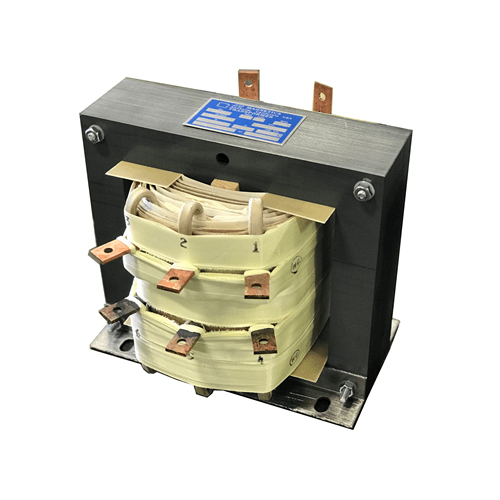
Such a transformer comes with multiple taps on the secondary winding. This offers a selection of output voltage levels. This step-down transformer is common in industrial settings where different equipment requires different levels of voltage.
Dry-type transformer
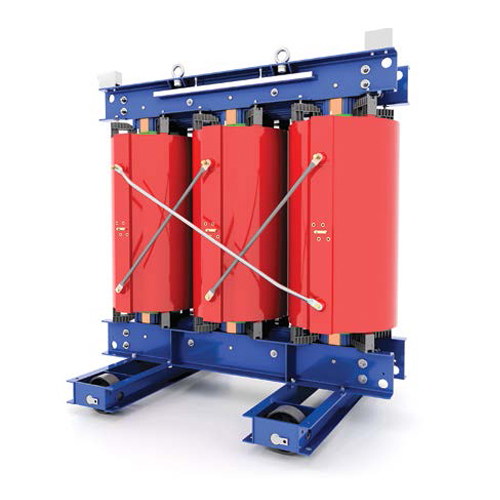
This step-down transformer is cooled by air. You can expect them to be used mostly for low-power applications and environments where using an oil-filled transformer is not possible. You can find them in commercial and industrial buildings as an example.
Oil-type transformer
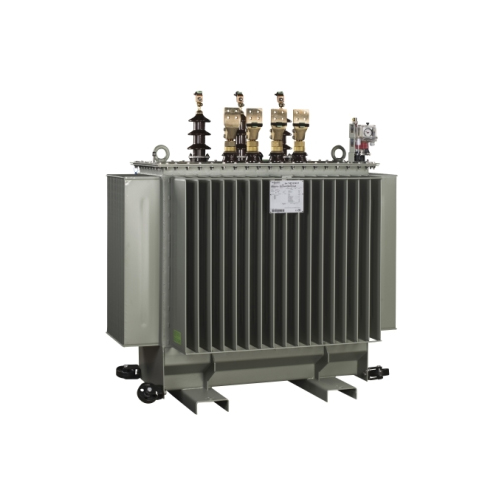
This type of transformer is cooled by oil. This is because they can handle high-power applications, and oil will do a better job of cooling them compared to air. That is why you will come across them in substations and power transmission lines.
Applications of a Step-Down Transformer
Household appliances and electronics, such as chargers and adapters, utilize step-down 變壓器 to ensure the power supply is within the range required by the devices. Such devices include smartphones, laptops, and other similar devices.
Televisions and other similar devices also need step down transformers for powering them effectively. Keep in mind that such devices need the right voltage for them to work well.
Power distribution and transmission are good applications where step down transformers are needed. This is because they are crucial for reducing the high voltage transmitted over long distance to lower and safer voltages needed for local distribution, such as homes and businesses.
You can also get them being used for applications such as welding machines, voltage stabilizers, inverters, and more. The idea is the same: get the voltage to a lower level that is needed to power devices.
Pros and Cons of Step Down Transformers
Pros
- Used for voltage reduction to make the power more usable, depending on the device
- They are necessary for safety as they reduce the risks associated with high voltage
- The transformers generally have the best efficiencies. This ensures the losses are kept to a minimum.
- The units can also be cost-effective, so implementation for different devices is easier
- Versatility is also worth mentioning, as you are likely to come across the step down transformers in a wide range of applications
Cons
- May experience energy losses, even if they are highly efficient
- Step-down transformers for high-capacity applications often tend to be bulky
- The larger step down transformers might need cooling systems as well, which can complicate the design and add maintenance needs.
How to Choose the Best Step-Down Transformers
The best step-down transformer is the one that meets your needs and other factors as well. Let us say you want a 240v to 120V step down transformer, these are the things you would consider.
Understand the Device’s Voltage and Wattage
Different devices have varying power requirements. The device should have a label indicating the required voltage. This enables you to get the right transformer whose output voltage can power your device correctly.
You should also consider total running wattage if you will be running several devices from the same transformer.
容量
We have already mentioned about the wattage of the various devices that you would connect to the transformer. It is best to oversize the step down transformer so that it can handle several devices without a problem. It also helps create a buffer in case of power surges and ensures the transformer does not overheat because too many devices are connected to it.
This part also ensures you have put in mind the future needs. If you will add more devices, they will still be covered.
Environmental Factors
Environmental factors such as temperature, humidity, contaminants, and altitude can affect how well the unit works. So, it is important to consider them as well. For example, the operating temperature is important so that you can choose a step-down transformer that can handle a high temperature rating.
If a transformer is exposed to high humidity, it can rust and fail over time. So, you have to ensure the transformer is rated for such a condition. It is the same thing with the altitudes. Ensure that you use a unit suitable for the altitude you are at. Some might not work well for high altitudes.
Safety and Certifications
Always ensure that the step-down transformer you purchase complies with the relevant international or local safety standards. The transformer you select should also have built-in safety features, including short-circuit protection, overload protection, and thermal protection.
Other Considerations
Consider the cooling option if you will be exposing the transformer to high voltages. For low-power applications, getting an air-cooled transformer is usually okay. However, the high-power applications need oil-cooled transformers.
The cost is important as well for a step down transformer. You need one within your budget while still delivering on overall performance. The size and weight of a transformer are important mostly because of portability. So, it comes down to the application.
Maintenance Tips for Step Down Transformers
We have looked at how do step down transformers work, the types, and applications. Now, we take a closer look at the maintenance aspect to ensure the transformer operates reliably for an extended period. Here is what to do.
- Regular visual inspections are important to ensure proper functioning. Monthly checks or as recommended by the manufacturer are highly recommended. Look for signs of leaks, damage, corrosion, and unusual noises.
- Check the oil level and its condition as well. The oil level should be within the right range, and the condition should be good. You do not want the oil level to be too low, as it might lead to overheating.
- Temperature monitoring is also recommended. You want to be sure that you have the right temperature measured all the time. If the temperature is too high, investigate to determine the cause of the problem.
- Ensure that the load capacity is maintained between 75% and 90% of the rated maximum capacity. Do not overload the transformer beyond its capacity.
- Doing specialized tests for a step down transformer for 220V is also necessary to see if it is working correctly. Examples include insulation resistance test, thermography, tan delta test, and others, depending on how the transformer is used.
Difference Between Step Up And Step Down Transformers

The step-up and step-down transformers differ primarily in their operational principles. In the step-up transformer, the output voltage is more than the input voltage. This is used mostly when you need power from a generator to match the high voltage needed for transmitting over long distances.
As for the step down transformer, it is mostly used for reducing the high input voltage to safer, lower levels so that you can use the power in homes and businesses.
The number of turns in the primary and secondary windings also vary between the two. For a step up transformer, the primary windings or turns as less than those in the secondary. Expect the step-down transformer to be the opposite.
How about the current relationship? The current in a step-up transformer is decreased to help conserve energy. As for the step-down transformer, the voltage is decreased while the current is increased.
| 特徵 | Step-up transformer | Step-down transformer |
|---|---|---|
| Voltage transformation | Increased voltage | Decreased voltage |
| Primary windings | Fewer than secondary | More than secondary |
| Secondary windings | More than primary | Fewer than primary |
| 應用 | Power generation, power transmission over long distances | Household appliances and electronics |
| Current relationship | Decreased current | Increased current |
結論
Whether it is a 220V or 480V step down transformer, they all have the same job. To reduce the voltage in the output so that it works well with the devices connected to it. As a result, it is key to choose the right transformer for the job. Start by assessing the different power needs you have, depending on the units that will be connected to the transformer. Of course, the maintenance is also important to ensure the best performance, as always. Whenever you are unsure about having such transformers, talk to professionals to help with the process.
請發送 RFQ,我們將立即回覆。
常見問題
Can you use a step down transformer in reverse?
Technically, it is possible, but it is not recommended unless it is a transformer designed to work bidirectionally. Reversing a transformer can often lead to safety risks or inefficient operation.
Can step-down transformers work for both AC and DC?
No. Standard step down transformers will only work for alternating current (AC). For you to step down direct current (DC), use another type of converter, such as a buck converter.
How efficient are step-down transformers?
Most high-quality step-down transformers will have an efficiency of 95 to 99% when under optimal load. The efficiency can quickly drop if the transformer is overloaded or overheating.


